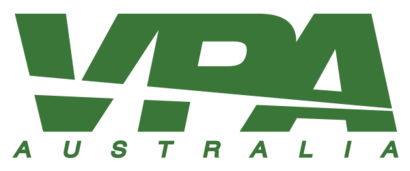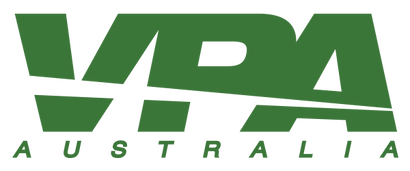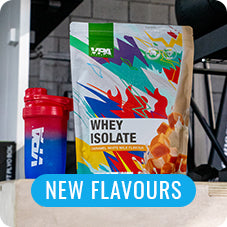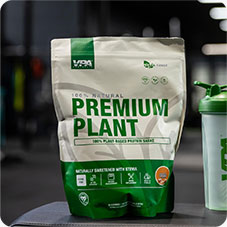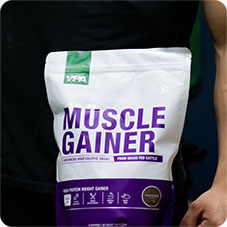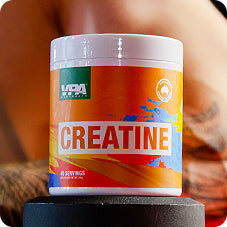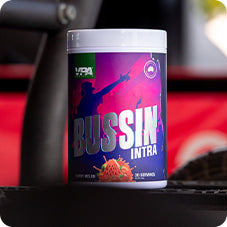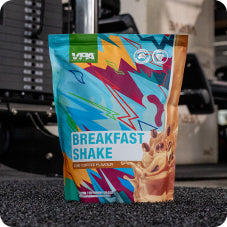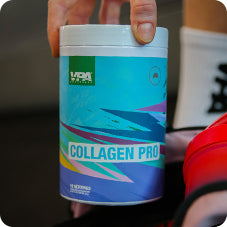Your Cart is Empty
How much protein do I need each day and how many protein shakes per day?
August 11, 2018 5 min read

First we have to some maths to figure out how much protein we actually need to be consuming each day! The common starting point for most gym goers is a 40/40/20 split. This means 40% of your calories from protein, 40% are carbs & 20% come from fats. There is nothing wrong with this at all as a starting point, but let me explain a better way to go about this as for a heavier person this may not work as well.
Lets use this BMR calculator here: http://www.bmi-calculator.net/bmr-calculator/
Let’s use myself as an example: I’m a 26-year-old male, 6ft tall and weigh 225 pounds. After using the calculator, I find my BMR is 2205.35
The next step we take is factoring in our activity through exercise and through our job. This is taken from the following table:
Reference: Wikipedia
My BMR is 2205.35 & I train 5 times per week and don’t have an extremely active job, giving me 2205.35 x 1.55 = 3,418.3
If I were to have say a labouring job or be constantly walking all day at work, then I might fall into the next category of 1.725.
So after adding in activity levels, I will maintain weight at roughly 3,400 calories per day.
Now that we have now figured out our energy balance, we need to figure out how much of this needs to be protein. The rule of thumb is 1g of protein per 1 pound of body weight. So in this case I would need 225g of protein regardless if I’m trying to gain or lose weight. Lets take a step back and look at the 40/40/20 split most of us use.
If I’m looking to maintain weight on 3,400 calories, 40% of that is 3,400 x 0.4 = 1360 calories divided by 4 (4 calories per gram of protein) = 340g of protein each day. In my case if I wanted to eat 40% of my calories in protein I would be eating 115g too much. In my case I would need 27% protein in my diet which is still a lot, but not as much as the 40%. In this case I could go with a 27/50/23 split where I’m having more carbs & fats which should turn to better performance in the gym and thus better results.
Let’s figure out the amount of protein based foods/supplements I would need to consume each day to meet my protein needs of 225g of protein.
200g of chicken breast (lunch)
200g of salmon (dinner)
70g VPA® Breakfast Shake (breakfast)
40g VPA® Night Time (before bed)
This totals roughly 213g of protein for the day and that’s not factoring in trace proteins that will come in with my carb/fat sources. For most gym goers 2-4 serves of meat and 2-4 serves of protein powder will bring them to their target.
My recommendation is to figure out how much you weigh in pounds then eat that number in protein each day. Use an app like myfitnesspal to track how much protein is in the food you are eating. Try to mix up your protein sources and have a nice balance between whole foods and high quality protein powder in your diet to meet this number.
How to train triceps effectively:
It’s easy to fall into a routine of doing the same exercise for your triceps each workout. We work that movement well, but are we giving the 3 heads of tricep the same amount of attention? We might be, but chances are we aren’t. First up lets look at the 3 heads of the tricep. We have the lateral, medial and long head of the tricep as seen below.
There are different exercises that will target more of each head of the tricep. So ideally we want to give equal attention to all 3 heads or in some cases where you have one overdeveloped head, you’ll need to start working on the other two heads a little more. For most of us we will be looking at doing multi joint exercises first, like bench pressing or shoulder pressing before we moving onto more isolation movements. But once we have finished with our bigger movements we can then going into our more specific exercises to bring up a lagging tricep head. Below are some great exercises that will target more of a specific tricep head.
Exercise for the Long head:
French Press.
Sit upright on a bench. Hold a barbell just inside shoulder width, over head with palms facing forward. Bend the elbows by lowering the bar behind your head, keeping your elbows tucked. Once at end range, come back up to full extension at the top. Aim for 8-15 reps per set.
Exercise for the Medial head:
Dips or close grip bench.
Dips.
Grab the bars and jump up. Balance yourself with locked elbows. Lower your body by bending your arms. Lean your torso slightly forward. Go down until your shoulders are below your elbows at the bottom. Lift your body back up to the starting position by straightening your arms. Balance yourself with your shoulders over your hands. Lock your elbows.
Close grip bench.
Lie back on a flat bench. Using a close grip (around shoulder width), lift the bar from the rack and hold it straight over you with your arms locked. This will be your starting position. As you breathe in, come down slowly until you feel the bar on your middle chest. Tip: Make sure that – as opposed to a regular bench press – you keep the elbows close to the torso at all times in order to maximise triceps involvement. After a second pause, bring the bar back to the starting position as you breathe out and push the bar using your triceps muscles. Lock your arms in the contracted position, hold for a second and then start coming down slowly again. Tip: It should take at least twice as long to go down than to come up.
Exercise for the Lateral head:
Skull crushers or Tricep Extensions.
Skull crushers, or triceps extensions, work the lateral head if you perform them on a flat bench, but you emphasise the lateral head even more when you use a decline bench. Secure your legs at the top of the bench and lie face up, with your head lower than your knees. Grasp a barbell with a narrow, overhand grip, straighten your arms and position the bar above your shoulders. Lower the bar behind your head, slowly, by bending your elbows. Your upper arms must move backward a bit, so the bar doesn’t strike your head, but try to move them as little as possible. Extend your arms to return to the starting position.
We aren’t limited to these exercises alone, but an easy way to think of it all is that the Lateral head needs more “elbows by the side exercises”. The Medial head needs more “elbows at rib height”. The long head needs more “elbows above the head”. If you look at the angle of the elbow in association with the shoulder joint this will be a much easier reminder of how to hit each head of the tricep.
Also in Supplements

Science-backed Benefits of Medium Chain Triglycerides (MCTs)
February 19, 2024 3 min read
Discover the science-backed benefits of medium chain triglycerides (MCTs) and learn how to incorporate them into your diet. Find out more at VPA Blog.
Read More
EAAs vs BCAAs
December 02, 2023 5 min read
Discover the differences between EAAs and BCAAs and their importance in our body. Learn how to choose the right amino acid supplement for your fitness goals. Find out the side effects and risks of EAAs and BCAAs supplementation. Explore more articles on supplements at VPA.
Read More
What are the benefits of N-Acetyl Cysteine (NAC)?
September 19, 2023 4 min read
Discover the benefits of N-Acetyl Cysteine (NAC) for respiratory health, mental health, liver protection, immune system support, and more. Learn about natural sources of NAC and its overall benefits.
Read More Recent Articles
- Science-backed Benefits of Medium Chain Triglycerides (MCTs)
- EAAs vs BCAAs
- What are the benefits of N-Acetyl Cysteine (NAC)?
- L-Lysine: Benefits, Side Effects, and Best Sources
- The Amazing Health Benefits of Glycine: A Complete Guide
- Essential Amino Acids: Unlocking Optimal Health and Performance
- L-Tyrosine - Boost Your Brain, Mood, and Overall Well-Being
- The Incredible Benefits of Wheatgrass: A Nutritional Powerhouse for Optimal Health
- The Power of Glutamine: Unveiling Its Benefits for Gut Health, Muscle Growth, and More
- Benefits of Reishi Mushroom

